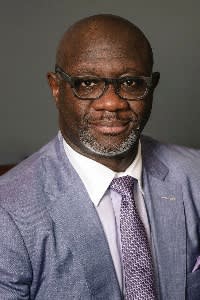How business schools can nurture tomorrow’s impact investors
[ad_1]
Impact investing has moved from the fringes towards the mainstream in the past few years, driven by the ever more evident effects of climate change and rising inequality. The sector is now worth at least $715bn. Yet, as investors and fund managers focus on impact, many business schools and their curricula are struggling to keep up. The future masters of the universe are not taught how to be masters of impact.
LeapFrog Investments, where I am a partner, has built its impact-driven funds with non-traditional investing teams. Its success is the result of hiring professionals with excellent financial experience, deep technical knowledge and localised insights into societal problems. In the six-person leadership of LeapFrog’s healthcare team, all but one have postgraduate qualifications beyond their MBAs, including an MD-PhD, two MD-MBAs, a CFA (chartered financial analyst) and an MPA (master of public administration).
This is not to say business education is unimportant. Over half of LeapFrog’s investment team and a quarter of our healthcare specialists have an MBA, but we draw from a small pool of institutions that reflect our geographical focus and have a track record in impact, led by the Indian Institute of Management and Indian School of Business, followed by Stanford, Duke, Oxford, Imperial and Insead.

Tackling complex challenges requires multiple skills. When I moved to Kenya in 2011, I observed how overstretched doctors had to double up as hospital managers while the health system barely improved. I realised that we needed to train a cohort of healthcare managers quickly. So, alongside Steve Sammut of the Wharton School in the US and Ben Ngoye of Strathmore Business School in Nairobi, I worked with Strathmore’s dean to create an MBA in healthcare management. So far, 225 African healthcare professionals have graduated, including 145 women.
We face an analogous situation in impact investing. Business schools can help to fill the gap. Graduates who are not trained to understand the social impact of the great breakthroughs happening in technology, biology, physics and other essential areas are less likely to understand the risks and rewards of investing in these innovations to overcome poverty and climate change.
A second area of focus for LeapFrog is diversity. For example, more than half of our team, and nearly half our partners, come from non-European backgrounds. Just under half of our team, and of our management board, are women. We hire people who have a cultural understanding of the markets we care about in Africa and emerging Asia. This allows us to appreciate the conditions in which our portfolio companies operate, and the lives of our low-income customers.
The same first-hand knowhow can be seen in our portfolio companies. The founder of Zepz, a digital payments company, is a Somaliland entrepreneur who started his business in frustration at the fees he was charged to remit money to his family in Africa. The chief executive of Northern Arc, a financial services business, is a woman who grew up in a fishing village in Goa, and now provides loans to 43m Indian women.
Business schools with strong diversity and inclusion policies are much more likely to produce successful impact investors working to alleviate poverty and disadvantage. Some top-tier schools are taking a lead, including Harvard, whose intake has a high degree of diversity, and Oxford, the majority of whose MBAs are international. Other institutions should follow suit with measures such as additional outreach programmes and scholarships.
A third priority for schools is establishing the metrics that can identify and measure real impact. That is not only an ethical imperative but also calls for a highly commercial skill set that all business students should acquire.
LeapFrog has created its own impact standards alongside groups such as the International Finance Corporation and the Global Impact Investing Network. As the industry has matured, the IFC’s Operating Principles for Impact Management, the GIIN’s IRIS+ (Impact Reporting and Investment Standards) and the UN’s Principles for Responsible Investment have developed roadmaps.
Here again, a few leading schools have responded, including Wharton, Harvard and Chicago Booth, which are working with investors to carry out research on the characteristics and drivers of success in impact investing. Such approaches should become core to MBA courses.
LeapFrog performs strongly in markets that others often find too challenging, because our team has been trained to hunt for impact. Our investment process starts with a rigorous assessment of a company’s purpose and potential to transform the lives of low-income consumers. It often ends, as it has for a number of unicorns in our portfolio, with a fintech or healthcare champion delivering market-leading returns.
If business schools can capture this essential interplay between profit and purpose, they will go a long way to teaching their students that impact and a strong focus on environmental, social and governance factors are not just nice things to have, but bedrocks of sound financial investments.
The winners of the FT Responsible Business Education Awards 2022 will be announced on January 19
[ad_2]
Source link







